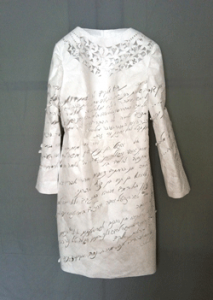By Aaron Rosen, December 2013
Excerpt:
For Dutch-born artist Yona Verwer, the driving force behind Jewish Art Salon in New York, both the Beit Midrash and JAI provided critical inspiration. Before she founded the salon in 2008, she says, “there was no community. Most artists did not know each other, nor did they know art historians, curators and writers.” Salon events, which quickly drew participants from around the country and even abroad, allowed artists to enjoy critical feedback from one another—something many had not had since art school—and provided a framework for wider exposure.

Excerpt:
Verwer takes these anxieties as a challenge. “One needs to march to one’s own drummer,” she says defiantly. “It is time for Jewish art to move into the realm of ‘cool.’” She dreams of seeing images of the intricate Jewish amulets and charms that she depicts in her paintings projected on the façade of the Empire State Building and other New York landmarks.
For Verwer and others, salons have given Jewish artists a productive way to respond to their minority status within the art world. Salons provide a receptive environment for artists to discuss aspects of their work that the art establishment often misunderstands or outright disdains. These gatherings also provide artists, especially younger ones, with the self-confidence of belonging to a movement. They have also helped relieve deep-seated anxieties about the place of visual art within Jewish culture itself, since most of the artists felt that Jewish literature, theater and music receive far greater attention than Jewish art. Verwer even goes so far as to call the visual arts “the stepchild in the Jewish arts community.”

Image courtesy of Ben Schachter.
There are a couple of explanations for this. On the one hand, there is a longstanding belief that Jews do not, or cannot, produce visual art. This is usually based on the mistaken belief—common among Jews and non-Jews—that the Second Commandment, the so-called prohibition against “graven images,” is the last word on the subject of representation. In reality, of course, Jews have interpreted this commandment in numerous ways. From the third-century murals of the Dura-Europos synagogue in Syria to the canvases of Marc Chagall, countless Jewish artists have painted the human figure.
Read full article here



